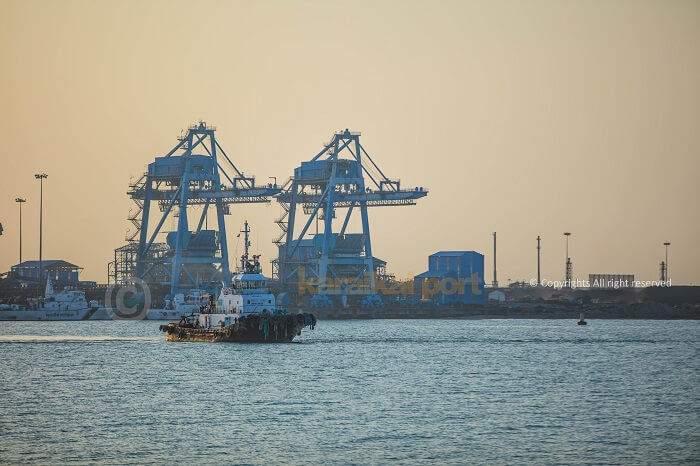September 1, 2020: Backlog in export shipments due to blank sailings coupled with an urgency to evacuate goods amid lockdowns due to COVID-19 pandemic have led to decreased efficiencies at major container terminals in India in the past few months, according to a report published by DMICDC Logistics Data Services (DLDS).
The operational efficiency of terminals is typically measured via the export dwell time, which reflects the time a container has spent in the vicinity. The DLDS report has calculated dwell time on the basis of port in time and port out time of a container.
Jawaharlal Nehru Port Trust (JNPT) in Maharashtra, Mundra and Hazira port in Gujarat, Kolkata port, Haldia port in Odisha, Tuticorin port in Tamil Nadu and Krishnapatnam port in Andhra Pradesh were among the worst hit in July, according to the report.
Average export dwell time at JNPT port touched 75 hours in July, up 9% month on month and the highest in 2020. At ports in Gujarat, the average export dwell time increased 5% month on month to 122 hours but remained below the peak of 128 hours in April.
At Kolkata and Haldia ports, the export dwell time in July was recorded at a yearly high. The dwell time at Kolkata port reached 147 hours, from 76 hours in January. Similarly, at Haldia port it touched 149 hours compared with 80 hours in January.
“Due to global lock down, factories were shut and exports decreased. This led to a lot of vessels skipping voyages. So the shipments had to wait for the next vessel. Mostly, vessels have a weekly schedule and once you miss that schedule you will only be able to send it next week. Chinese vessels continue to have 14-day quarantine period, which has led to the export cycle increasing,” a port official told S&P Global Platts.
Cancelled sailings into India peaked in May, when 23% or 100 of the 439 typical sailings were voided, according to maritime intelligence company eeSea.
Blank sailings since May have gradually came down to 65 of 411 sailings in June, 59 of 427 sailings in July, according to eeSea.
Earlier cut-off time on account of COVID-19 precautions and seasonal factors also drove the export dwell time higher.
“Typically, longer gate-in time by ports for exports contribute to the box coming earlier into ports and hence pushes up the export cycle. July tends to see higher dwell times as exporters tend to push out consignments earlier, factoring in probable delays in transit due to heavy rainfall in monsoon months,” Sameer Bhatnagar, Partner- Transport and Logistics, KPMG in India told Platts.
As exports volume increase, gate-in time reduce thereby reducing Export Dwell time. Thus, we may see some improvement in August ,September and volumes recovery may happen by October, November and export dwell times likely to reduce, Bhatnagar added.
Higher than normal monsoon rains and recurring cyclones slowed down the export activity in the country, market sources said.
When there are heavy rain or a cyclonic activity, the vessels are asked to wait outside the dock, because it’s too dangerous to dock the vessels, an executive with a container leasing company said, adding that the vessel may even have to wait for up to 48 hours at times.
Despite the increase in dwell time, the impact on overhead costs for exporters was marginal as demurrage, detention and extra charges were waived off by shipping liners, ports and Inland Container Depots (ICD) under the instruction of Ministry of Home Affairs.
“Cost did not go up because Ministry of Home Affairs had issued guidelines for all the shipping lines and ports that during the lockdown period no extra charges should be incurred on exporters and importers,” Sanjay Dhingra, Partner at Asia Transport Co. told Platts.
Meanwhile, import dwell time across almost all container port terminals across India reduced in the month of July after peaking during the months of April and May, as overall imports decreased and lockdown measures in-place to combat the coronavirus pandemic were gradually lifted.
The import dwell time of cargo is generally lower than export dwell time as terminal operators have to aggregate the cargo for exports while official formalities for imports consume comparatively lesser amount of time, the port official noted.
Source: S&P Global Platts






